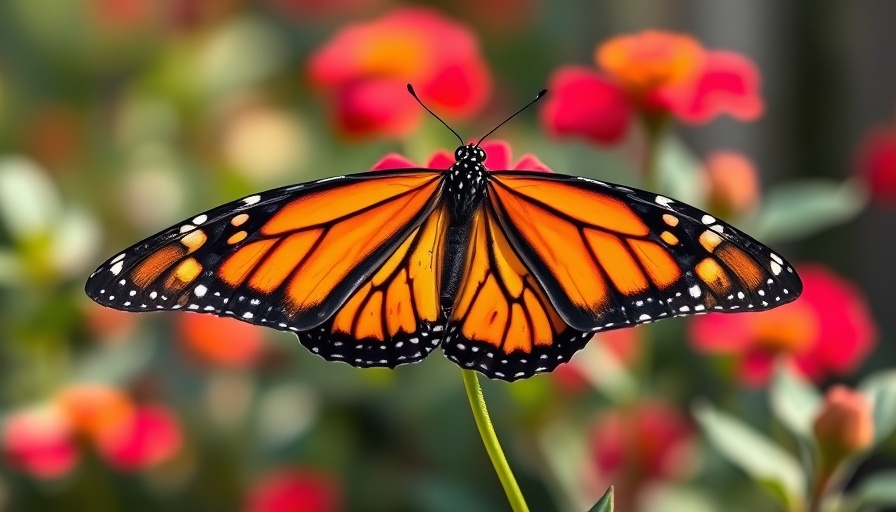
The Troubling Decline of Western Monarch Butterflies
In a harrowing revelation, a recent study has implicated pesticides as a key factor in the alarming mass die-off of Western monarch butterflies. This event, which transpired in 2024 near the Pacific Grove Monarch Sanctuary in California, has drawn the attention of environmental scientists and conservationists alike.
Pesticides Found at Lethal Levels
The research team, led by Staci Cibotti at the Xerces Society for Invertebrate Conservation, demonstrated that hundreds of dead monarchs exhibited signs of neurotoxic pesticide poisoning. Through advanced laboratory techniques, including liquid and gas chromatography, they discovered an alarming presence of 15 different chemical substances on the butterflies, predominantly insecticides that are highly toxic to insects. Rather worryingly, each butterfly was found to carry an average of seven different pesticides, with some chemicals reaching lethal concentrations.
Understanding the Threat
Western monarchs are particularly vulnerable during their overwintering months along the California coastline. Here, they face an increased risk due to pesticide drift from neighboring agricultural and urban settings. Despite extensive investigations by local officials, the source of these harmful chemicals remains elusive, underscoring the urgent need for stricter regulation and monitoring of pesticide use in these sensitive ecosystems. According to Cibotti, "Although a review by Monterey County could not determine the source of the chemicals, the high levels detected suggest that insecticides were likely responsible for the monarch deaths.”
The Bigger Picture: A Species in Peril
Sadly, this episode is far from isolated. The splendid Western monarch population has plummeted by almost 95% since the 1980s. The International Union for Conservation of Nature has listed migratory monarch butterflies as endangered, and forecasts from the U.S. Fish and Wildlife Service predict a staggering 99% chance of extinction by 2080 if current trends continue. Only 9,119 Western monarchs were recorded in the recent count, depicting a troubling outlook for the species.
Why Should We Care?
The decline of the Western monarch butterflies is not merely an environmental statistic; it resonates deeply within our collective ecological consciousness. Monarch butterflies play a crucial role in our ecosystems as pollinators, contributing to the health of numerous plants and agricultural systems. Their decline can signal broader issues with biodiversity loss and environmental degradation that impact human populations as well.
Actions Needed for Conservation
Given the clear connection between pesticides and the decline in monarch populations, concerted measures must be taken to create more environmentally friendly agricultural practices. Public awareness and community action can substantially drive forward the conservation of these charismatic insects. Educational initiatives focusing on sustainable farming, chemical-free gardening, and habitat preservation can help galvanize community efforts.
Conclusion: A Call to Action
In preserving the delicate balance of our ecosystems, we must heed the lessons presented by the plight of the Western monarch butterfly. Advocate for policies that promote organic farming practices, support local conservation efforts, and demand more stringent regulations on pesticide application. By acting collectively, we can help secure a future for not only monarchs but countless species that share their habitat.
 Add Row
Add Row  Add
Add 



Write A Comment